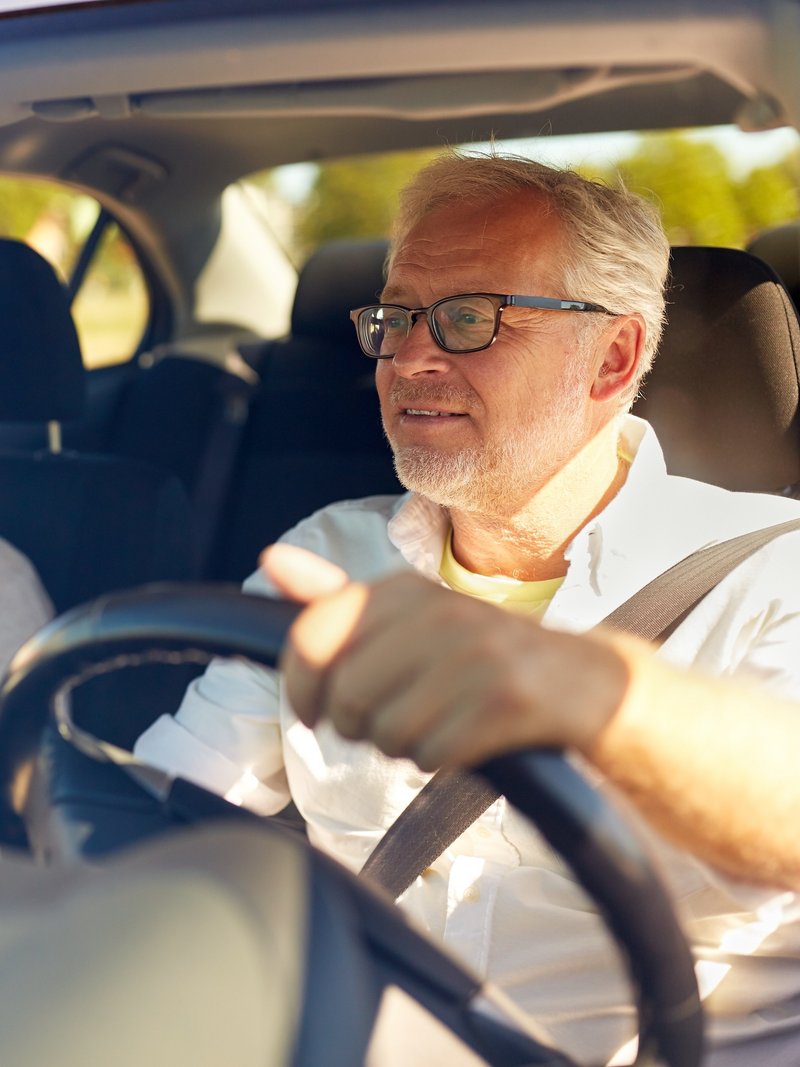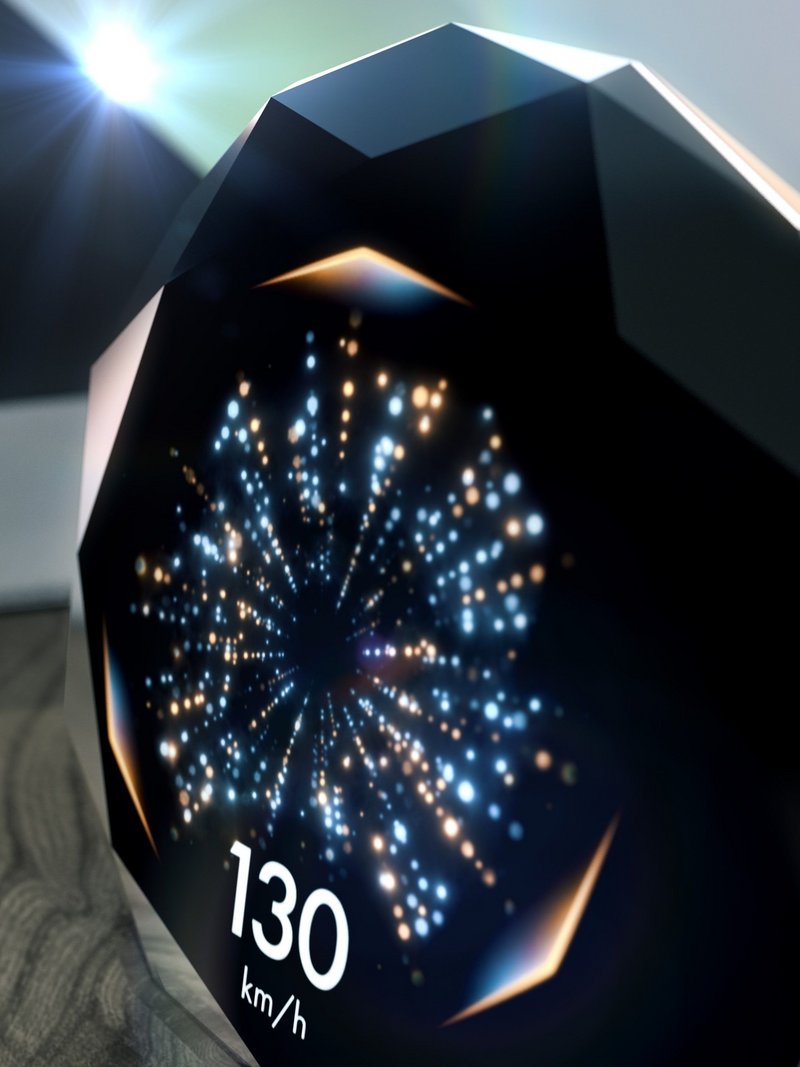A Turn Toward Safety
A Turn Toward Safety
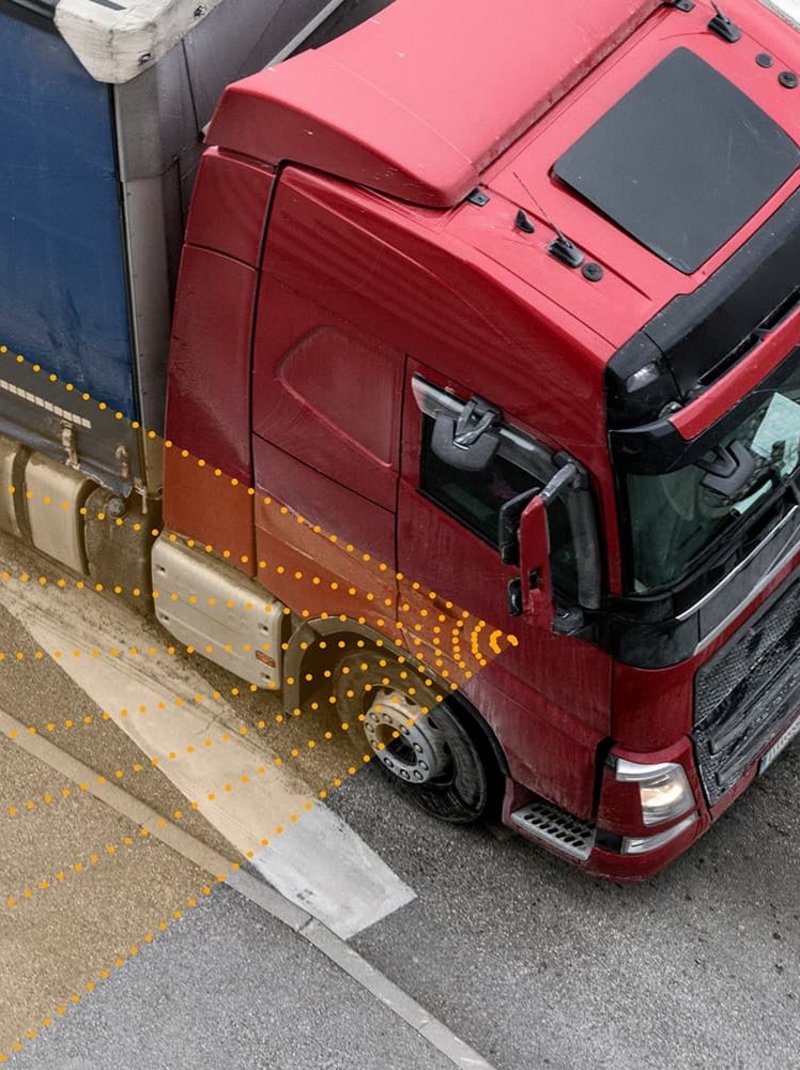
Any accident is an accident too many. With traffic scenarios becoming increasingly complex and the number of road users on the rise, modern corning assistance systems can help save lives.
Accidents: a sad reality
All too often we continue to hear about traffic accidents in which people are seriously injured or even lose their lives. In order to do something about this and develop effective solutions, we first need to take a look at the statistics. These show in particular that while significant improvements have been made over the years, there is still a long way to go.
The number of traffic fatalities in Germany peaked at 21,332 in 1970.
The number of traffic fatalities in Germany fell steadily in subsequent decades to 3,180 in 2017 – the lowest figure since 1950.
3,275 people lost their lives in road traffic accidents in Germany in 2018. The number of people injured increased by 1.5 percent to 396,000.
The reasons for this alarming trend are varied: there are more and more vehicles on the roads, new road users such as e-scooter and pedelec riders are changing mobility habits and smartphones and headphone music are a constant source of distraction.
Where most accidents happen
The statistics also reveal that while 69% of accidents occur in built-up areas and only 24.3% on country roads, the latter make up 57% of all fatalities. Freeways are comparatively safer, accounting for 6.7% of all accidents resulting in injuries. Overall, the number of car occupants killed has fallen significantly by 22.6% and the figures for pedestrians and motorcyclists have also recorded slight declines. But one figure above all is cause for concern: the number of cyclists killed in road traffic accidents has risen by 16.8%.
Cyclists are at particular risk
Bicycles by the roadside painted white and occasionally adorned with flowers are an all-too-common sight, especially in urban areas. These “ghost bikes” are placed as memorials to cyclists who were fatally injured in road traffic accidents at these locations. The idea originates from St. Louis, Missouri, in 2003 and has now been adopted worldwide. Clearly, the risks to cyclists are a global issue. In Germany alone, according to a study by German Insurers Accident Research (Unfallforscher der Versicherer, UDV), about one third of cyclists killed each year on the road are victims of cornering accidents. The German Cyclists’ Association (Allgemeine Deutsche Fahrrad-Club e. V. indicated: “While car occupants benefit from increasingly advanced vehicle technology, there have been few safety improvements for cyclists.” The association also points to the significant danger presented by trucks and passenger cars when turning, and has called on the federal government to introduce “mandatory cornering and emergency brake assistance systems to protect cyclists, physically protected cycling lanes, intersections based on the Dutch model and separate traffic light circuits for bicycle traffic.”

Lawmakers bear primary responsibility
The technologies required to make turning safer have long been available and are constantly being improved. Now, lawmakers have finally responded in kind by placing obligations on manufacturers. From 2022, the installation of cornering assistance systems in trucks will be mandatory for all new vehicle types throughout the EU. But what about trucks already on the road? After all, retrofitting an electronic cornering assistance system costs €800 to €1,300 – a huge amount for freight companies under cost pressure, especially where entire fleets are concerned. Voluntary commitments by the industry are a start, but here too policy is needed and a legal obligation can only be introduced at European Union level. Unfortunately, EU Commission plans indicate this will take until 2022.
Act now, not tomorrow
Experts in advanced driver assistance systems are working hard on future generations of Right Turn Assist for trucks. Continental already supplies these production-ready radar-based systems, which warn commercial vehicle drivers as soon as pedestrians or cyclists enter their blind spot. The system uses radar sensor technology to detect whether road users are in the vehicle’s danger zone and warns the driver of potential collisions. The driver is notified of the hazard by two warning signals so that any collision danger can be identified and avoided immediately.
Our Vision Zero with the objective of zero accidents also applies to freight transportation.
The innovative driver assistance systems will soon be further improved with additional cameras and also through the use of artificial intelligence. The Continental Computer Vision Lab is developing new software technologies and algorithms for this purpose. In future, machine learning, neural connectivity and new imaging processes will help to identify approaching cyclists and pedestrians much earlier and anticipate their intentions. This increases overall safety and acceptance among drivers.
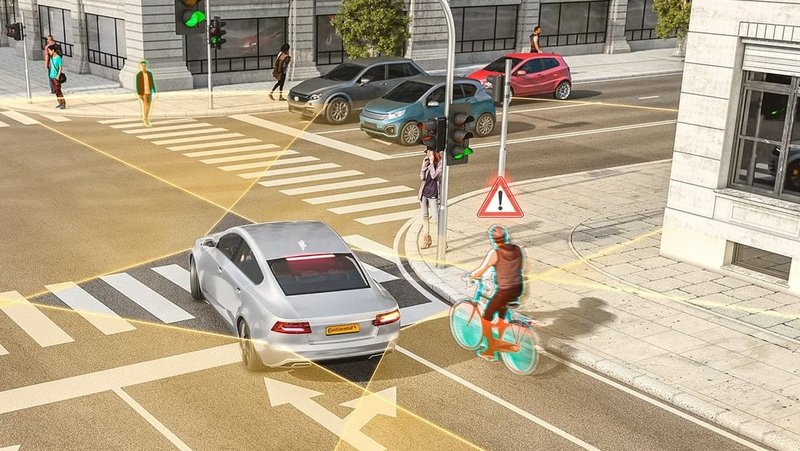
Everyone’s talking about trucks – but we’re also focusing on cars
Vision Zero – the dream of accident-free driving – applies to all road users, not just trucks. Continental’s Right Turn Assist system helps drivers with the often confusing situation of turning across traffic, as well as protecting other road users located in the area to the right-hand side of the vehicle. As such, the technology is already doing what Euro NCAP security scenarios do not require until 2022: further improving protection for pedestrians and cyclists. A study carried out by Continental’s accident research unit indicated that Right Turn Assist systems in passenger cars can help to prevent 5% of all accidents in which cyclists are killed or severely injured in Germany (7% in Japan, 8.5% of all accidents in which cyclists lose their lives in the U.S.A.) and a further 6% of accidents where cyclists suffer minor injuries.
Nothing escapes the radar’s view
A new short-range radar now monitors the vehicle’s surroundings even more precisely. Four radar sensors at the four corners of the vehicle’s body enable almost seamless 360° monitoring – and are a valuable aid in confusing traffic situations, especially in urban areas. A genuine leap in development lies behind this. Instead of the 24-gigahertz (GHz) technology used up to now, the new radar generation operates at 77 GHz. This means that the radar sensor detects the environment at a much higher resolution and level of accuracy than in the past. The 77 GHz sensor can also calculate the direction of movement and speeds more precisely. If the radar sensors detect a cyclist on the right-hand side straight ahead when cornering, the car driver is initially warned acoustically or visually. If the driver does not react, the system can then stop the car by triggering the brake to prevent a collision. The new sensor system’s components require even less space than its predecessor, meaning installation of this technology is no longer restricted to premium class, but can also be easily fitted in compact class vehicles.
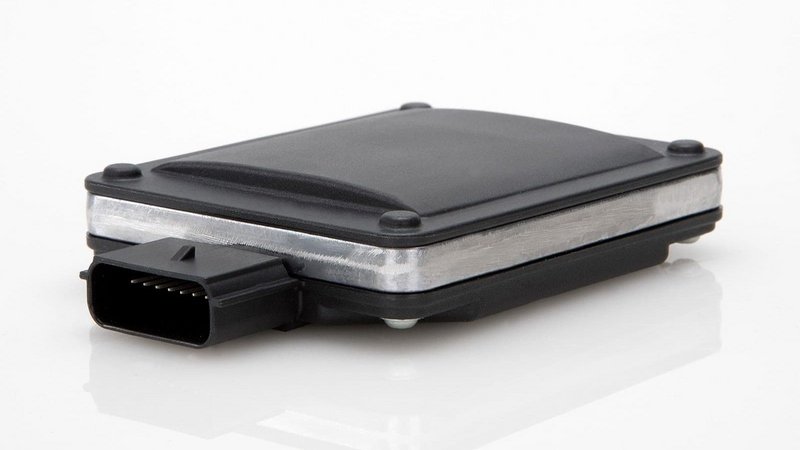
Avoidance assistance systems are also a realistic possibility
The high-resolution vehicle surroundings monitoring lays the foundation for further future assistance systems related to Vision Zero. An avoidance system can also be produced using the data from the new radar generation. The system’s comprehensive, high-precision monitoring of the vehicle’s surroundings means it knows exactly which other road users are in the vicinity, as well as their trajectories and speeds, and can adjust the steering signals accordingly. In the event of a sudden avoidance maneuver, the system steers the vehicle to where there is no risk of collision.
Left Turn Assist system for agricultural machinery
Tractors are frequently involved in serious accidents. Little wonder: tractors and combine harvesters designed for rough terrain actually spend around a third of their operating time on public roads. For other road users, their driving behavior is often difficult to anticipate due to their length, width and low speed. They also usually have bigger blind spots and less all-around visibility. Turning to the left across oncoming traffic is particularly hazardous. To improve safety in this respect, Continental has developed the globally unique Left Turn Assist system. Based on radar technology, the easy-to-install system can detect vehicles approaching from behind at a distance of up to 250 meters – regardless of weather and light conditions. If a critical situation arises when turning, the driver of the agricultural machine receives a warming via an acoustic or visual signal. This allows traffic to pass the tractor and farmers to reach their destination safely.
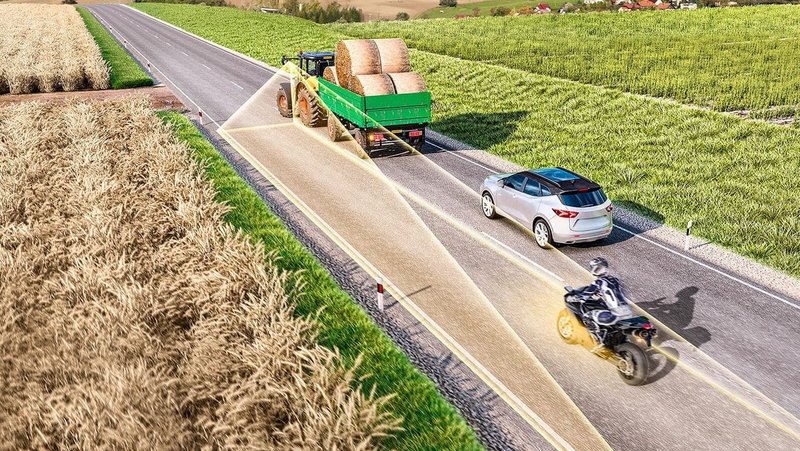
At the intelligent intersection in Walnut Creek
Data collected by the US Department of Transportation indicates that more than half of all accidents that result in injuries in the U.S.A. occur at intersections. If people or vehicles are not seen when turning, it is usually a case of human error. Pedestrians and cyclists are at particularly high risk at times of the year when there is less light. To improve safety at intersections, Continental has been operating a comprehensive pilot system for over a year to test an intelligent intersection in Walnut Creek, California.
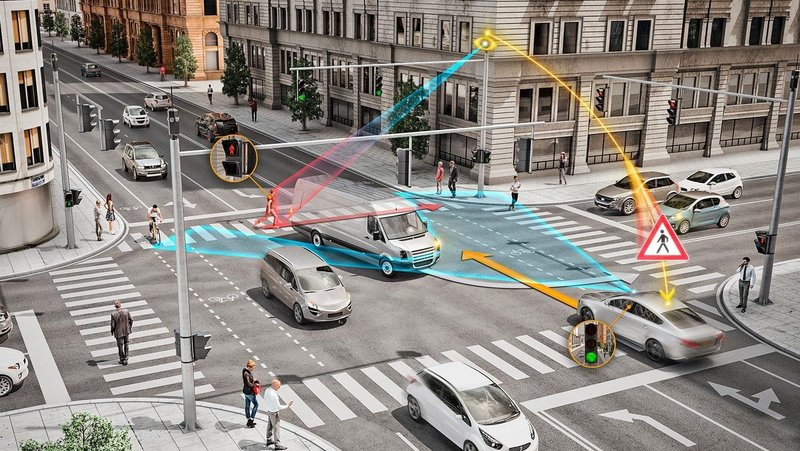
Hardware and software solutions for emergency braking systems can be further enhanced for infrastructure applications. We are also using the Internet of things here.
The intelligent intersection creates a full picture of its surroundings using various sensors and high-performance algorithms and enables the exchange of information with connected vehicles. This means that an approaching driver can be warned if pedestrians want to cross the intersection outside of their field of vision. Drivers turning right are informed of vehicles coming from the left. Vehicles turning left are notified of oncoming vehicles that were not previously visible. The data generated can also be used to optimize the flow of traffic and to reduce emissions and times when traffic is at a standstill at intersections. This enables safety aspects and economic benefits to be combined at intelligently connected intersections.
